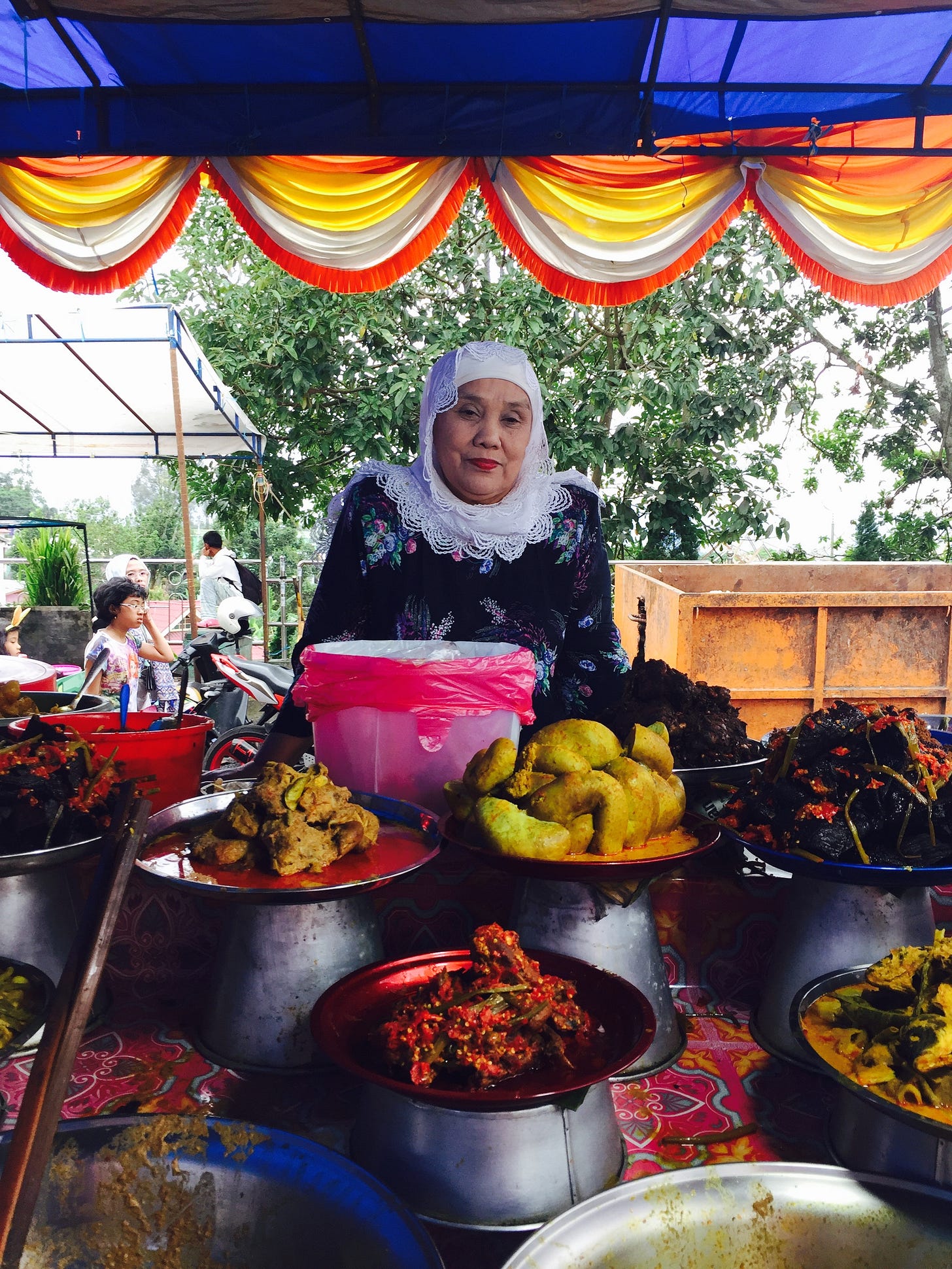My book, Feast, Food of the Islamic Wolrd, was first published seven years ago and one of the reasons I had decided to write it was to go against Islamophobia, by presenting the rich history of the religion and its people through the lens of food. Before then, there wasn’t much coverage in the western press about Ramadan and the foods prepared during that month.
I had written about it for Saveur a few years earlier, and I am pretty sure elsewhere although I can’t remember where. Anyhow, this is not to say that my book marked the beginning in the change of attitude towards the culinary rituals during the most important time of the year for Muslims but its success played a part. And now, we even have Ramadan lights in London although it would have been just as lovely if the UK government did more to help bring peace to the Middle East.
Anyhow, Ramadan started yesterday, 11 days or so earlier than last year — Muslims follow the lunar calendar — and I thought I would write about it and the contrast between the austere days when everyone is fasting and the joyous nights when people gather around food once the fast is broken at sunset.
The fast can be considered harsh by some, with not even a drop of water allowed through the lips of the faithful from sunrise to sundown, As a result, the rythm slows down in Muslim majority countries and even though people still go to work, everything happens au ralenti as it were. However, the atmosphere changes once the sun goes down. The faithful first break their fast with a few dates to emulate the Prophet Mohamed, blessings be upon him, or a fruit juice or a sweet drink depending on where they are in the world, before they retire to pray. After which comes the time to relax with family and friends around the table for iftar, the first meal of the day. In Lebanon, there will be fattoush at the table amongst many other dishes. In Morocco, Harira with chbakiya is de rigueur whilst in the Gulf there will be tharid, a layered dish with bread, vegetables and meat, which is said to have been the Prophet’s favourite dish.
In Zanzibar, there will be noodles and sesame bread as part of iftar spread (or futari as it is know there) while in Egypt there will be a tahini dip, made with or without grilled aubergines.
I happened to be there one Ramadan while researching my Mediterranean street food book and while walking through old Cairo just before sunset, I came across a long table set for about 20 people, right in the middle of the street. Men were sitting very quietly all around the table waiting for the Muezzin to announce the setting of the sun to start eating. I was very curious to know why such a set up and was told that it was Ma’edat al-Rahman (meaning the table of the compassionate or merciful). In most poor or underprivileged areas, there will be such a set up, sponsored by those more privileged to provide food for the needy.
In the UAE one night, I saw hundreds of pre-packed meals neatly laid on plastic sheets on the floor in the courtyard of a mosque waiting for those wanting to break their fast, again provided by rich sponsors to those who couldn’t afford them. This said, these alms meals are not controlled and anyone can partake in them. The women were provided for in a separate part inside the mosque.
Each country will have its own Ramadan foods. Some like Egypt are really fun to visit during that month because everything happens on the street once the sun sets while other countries like Oman are practically shut down because people prefer to stay at home to break the fast, while not much happens during the day because everyone is fasting. Regardless, it is a very interesting time of the year for foodies to visit Muslim countries, not only because of the change of rythm but also because there are so many foods specific to that month, in particular sweets.
I remember, when I still lived in Beirut, seeing sweets makers setting up large frying vats outside their shops to fry industrial quantities of kellage (a cream filled sweet made with a wafer like pastry), a Ramadan sweet par excellence whilst in Indonesia, and in particular in a gorgeous market in Bukittinggi, there were stalls laden with ready made food for people to buy to take home to break their fast, which was unusual given that in most countries, the food for iftar is home cooked unless families and friends go out — during that month, large tents are set up to cater to those wanting to eat out.
And with this, I take the opportunity to wish Ramadan Mubarak to all those observing it.
Ps. the picture above is that of a woman stall-holder in Bukittinggi while the top pic is of Baji, a wonderful home cook in Srinagar, Kashmir who I was introduced to by Marryam Reshi. Marryam very kindly came with me to Kashmir and was a most wonderful guide and companion. We spent one morning with Baji watching her cook the most delicious Kashmiri dishes, which we feasted on once they were ready. The bottom pic is of the wonderful meal Baji had cooked for us.







Thanks for this, Anissa, a wonderful rapid tour of the Ramadan world.
I loved reading this. I really want to visit these places at some point in my life - if anything, to try the food! And I love your books!